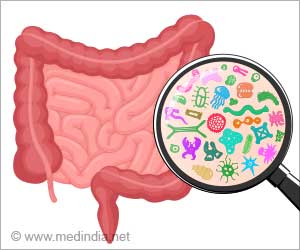New research should make it possible to have designer strawberries
Researchers at the Virginia Bioinformatics Institute (VBI) and the Department of Horticulture in the College of Agriculture and Life Sciences at Virginia Tech have developed a new procedure for the efficient transfer of specific DNA sequences into the genome of strawberry. The method takes advantage of Agrobacterium's circular DNA molecule (T-DNA) to deliver DNA to the plant. By helping researchers establish the function of large numbers of strawberry genes, this method could, in the long term, be extremely useful in enhancing the nutritional value of these plants as well as the amount of health-enhancing antioxidants that they may contain.
Jerzy Nowak, professor and head of the Department of Horticulture at Virginia Tech, commented: "Over the years, scientists have worked hard to find a system that would enable the efficient transformation of strawberry. However, these efforts have fallen short of the requirements to support large-scale studies of gene function in fruit crops." He added: "What sets this work apart is the concerted approach adopted by the researchers to combine different parameters that boost the efficiency by which foreign DNA is introduced into this economically important crop."Herb S. Aldwinckle, professor in the Department of Plant Pathology at Cornell University, Geneva, New York, who has developed highly efficient techniques for transforming apple, remarked: "The commercial strawberry familiar to most consumers is octoploid, which means that it contains eight sets of chromosomes. By using a close relative that has two sets of chromosomes and a significantly smaller genome, the researchers have found a particular type of alpine strawberry that is very amenable to transformation." He added: "The transformation rate achieved is the result of innovation and great attention to experimental detail." Due to the small size of its genome, short reproductive cycle and small plant size, F. vesca is an ideal model system for genomics in commercial strawberry. The rapid growth of new shoots, the high number of seeds generated and the ease in which new plants may be established, make this plant an ideal candidate as a platform for large-scale studies to elucidate gene function.
The new protocol involves taking strawberry plant tissue from its original site and transferring it to an artificial medium for growth or maintenance. Here unfolded leaves, known as trifoliate leaves, are able to grow. When collected at 6-7 weeks after seed germination, these leaves are highly amenable to gene transfer using A. tumefaciens. Since they glow green under fluorescent light due to the presence of Green Fluorescent Protein (GFP), transformed strawberry plants may be easily identified by visual inspection. This is the first time that GFP has been used in strawberry as a visually selectable marker.
Commenting on the research, VBI Professor Vladimir Shulaev, one of the authors of the study, remarked: "The development of this protocol for strawberry represents a key milestone for researchers interested in improving strawberry and other fruit crops through genomics." He added: "We are now in a position to generate a collection of mutants that will serve as an invaluable tool not only for discovering new genes in the Rosaceae family but also for establishing the functions of these genes through high-throughput screening methods."
The electronic preprint of this article entitled "High-efficiency transformation of the diploid strawberry (Fragaria vesca) for functional genomics" (Planta, 2005, Dec 1:1-12) is available online at www.springerlink.com/openurl.asp?genre=article&id=doi:10.1007/s00425-005-0170-3 [Epub ahead of print].
The work was funded by a Virginia Tech ASPIRES grant (A Support Program for Innovative Research Strategies). Virginia Bioinformatics Institute (VBI) at Virginia Tech has a research platform centered on understanding the "disease triangle" of host-pathogen-environment interactions in plants, humans and other animals. By successfully channeling innovation into transdisciplinary approaches that combine information technology and biology, researchers at VBI are addressing some of today's key challenges in the biomedical, environmental and plant sciences.
Contact: Barry Whyte whyte@vbi.vt.edu 540-231-1767 Virginia Tech





